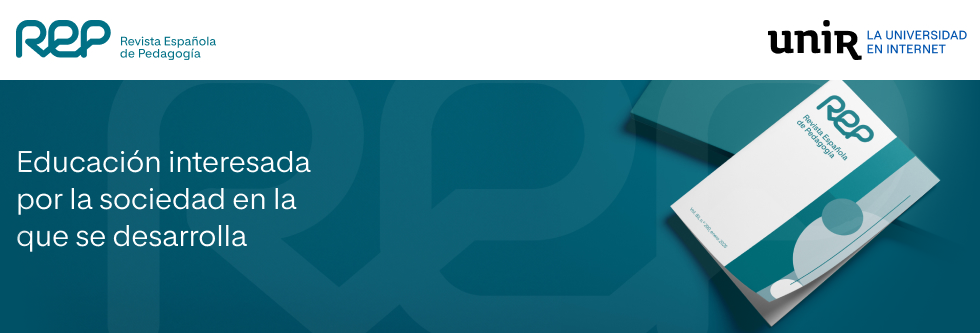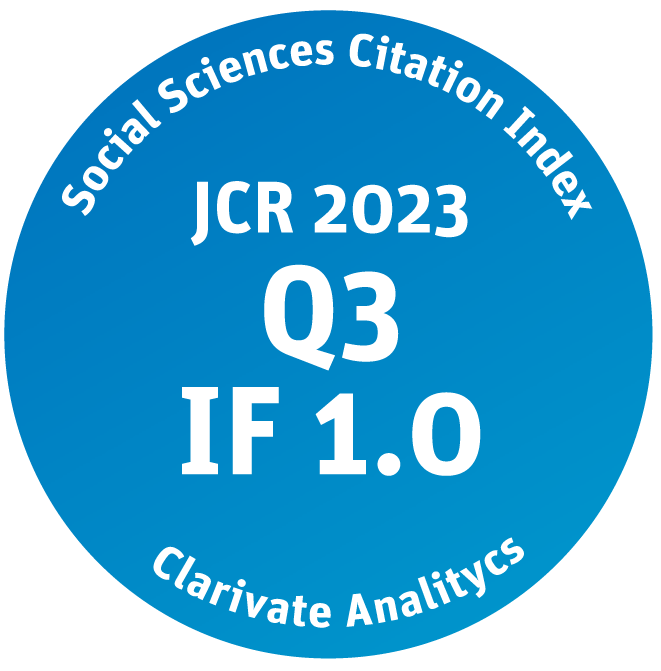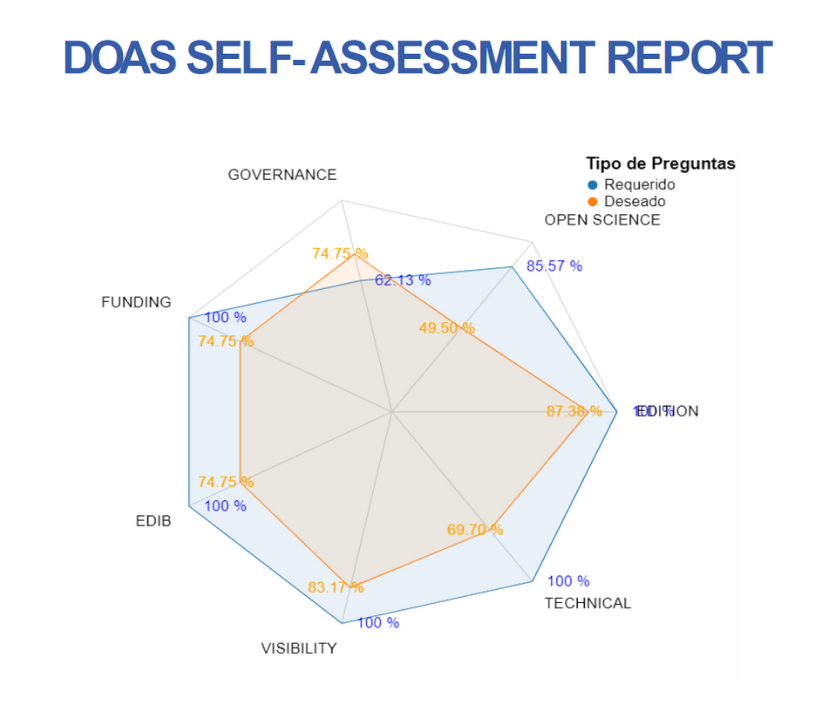La enseñanza del inglés universitario en un entorno digital: la experiencia de China
DOI
10.22550/2174-0909.4152
Abstract
The study aims to evaluate the efficacy of mobile applications within language education, as well as to understand how this technology affects language learning outcomes and student perceptions. The research methodology rests on the development and testing of mobile technology interventions for learning English in an educational setting. The study used a mixed approach to analyze the data. This included a language proficiency test, such as the College English Test 4 (CET-4). Additionally, attitudes towards the mobile assisted environment for learning English by conducting a qualitative survey using a 5-point Likert scale were assessed. Two popular applications in China (Keke English and Lanren English) were used according to the research objectives. The study involved a sample of 190 students studying English as a foreign language (EFL) at three public colleges in China. The distribution of language proficiency levels in both the control and experimental groups showed differences in the preliminary test, while the experimental group demonstrated a slightly higher level of language proficiency. After the intervention, in the experimental group, there were significant improvements in various aspects of language proficiency. The improvement is evident in the post-test results of the experimental group, as reflected by a t-value of approximately 13.249. This result suggests the effectiveness of the intervention. Negative percentages (≈-50.0% and ≈-16.7%) indicate a decrease in the proportion of students with the B1 (intermediate) level after the intervention. Thus, some students managed to reach higher levels of language proficiency (B2, C1). The practical significance of the research findings lies in their potential to improve the practice of language teaching, especially in the context of English language teaching in Chinese colleges.
Financiación | Funding
This paper was supported by the General Project of Humanities and Social Sciences Research in Universities of Henan Province; Research on the Training Mode of International Talents in Applied Universities of Henan Province; Project No.: 2024- ZDJH-159.
Referencias | References
An, Z., Gan, Z., & Wang, C. (2020). Profiling Chinese EFL students’ technology-based self-regulated English learning strategies. Plos One, 15(10), e0240094. https://doi.org/10.1371/journal.pone.0240094
Başal, A., & Kaynak, N. E. (2020). Perceptions of pre-service English teachers towards the use of digital badges. Innovations in Education and Teaching International, 57(2), 148-162. https://doi.org/10.1080/14703297.2019.1649172
Bashori, M., Van Hout, R., Strik, H., & Cucchiarini, C. (2021). Effects of ASR-based websites on EFL learners’ vocabulary, speaking anxiety, and language enjoyment. System, 99, 102496. https://doi.org/10.1016/j.system.2021.102496
Bećirović, S., Brdarević-Čeljo, A., & Delić, H. (2021). The use of digital technology in foreign language learning. SN Social Sciences, 1(10), 246. https://doi.org/10.1007/s43545-021-00254-y
Bernacki, M. L., Greene, J. A., & Crompton, H. (2020). Mobile technology, learning, and achievement: Advances in understanding and measuring the role of mobile technology in education. Contemporary Educational Psychology, 60, 101827. https://doi.org/10.1016/j.cedpsych.2019.101827
Cakmak, F. (2019). Mobile learning and mobile assisted language learning in focus. Language and Technology, 1(1), 30-48.
Chan, K. L. R. (2016). Attitudes towards Hong Kong English: Native English teachers and local English teachers. Asian Journal of English Language Teaching, 26, 85- 110.
Clark-Wilson, A., Robutti, O., & Thomas, M. (2020). Teaching with digital technology. Zdm, 52(7), 1223-1242. https://doi.org/10.1007/s11858-020-01196-0
Dağdeler, K. O., Konca, M. Y., & Demiröz, H. (2020). The effect of mobile-assisted language learning (MALL) on EFL learners’ collocation learning. Journal of Language and Linguistic Studies, 16(1), 489-509. https://doi.org/10.17263/jlls.712891
Dehghanzadeh, H., Fardanesh, H., Hatami, J., Talaee, E., & Noroozi, O. (2021). Using gamification to support learning English as a second language: A systematic review. Computer Assisted Language Learning, 34(7), 934-957. https://doi.org/10.1080/09588221.2019.1648298
Edwards, J. G. H. (2017). China English: Attitudes, legitimacy, and the native speaker construct. Is China English becoming accepted as a legitimate variety of English? English Today, 33(2), 38-45. https://doi.org/10.1017/S0266078416000171
Gao, C., & Shen, H. Z. (2021). Mobile-technology-induced learning strategies: Chinese university EFL students learning English in an emerging context. ReCALL, 33(1), 88-105. https://doi.org/10.1017/S0958344020000142
Gao, Y., Wang, Q., & Wang, X. (2024). Exploring EFL university teachers’ beliefs in integrating ChatGPT and other large language models in language education: A study in China. Asia Pacific Journal of Education, 44(1), 29-44. https://doi.org/10.1080/02188791.2024.2305173
García, G., Questier, F., Cincinnato, S., He, T., & Zhu, C. (2018). Acceptance and usage of mobile assisted language learning by higher education students. Journal of Computing in Higher Education, 30, 426-451. https://doi.org/10.1007/s12528-018-9177-1
Girón-García, C., & Bernad-Mechó, E. (2024). La participación del público en la era digital: una propuesta para la formación de los estudiantes en alfabetizaciones multimodales a partir de vídeos de difusión de la investigación en YouTube [Engaging audiences in the digital age: A proposal for students’ training in multimodal literacies using YouTube research dissemination videos]. Porta Linguarum. Revista Interuniversitaria de Didáctica de las Lenguas Extranjeras, (41), 297-312. https://doi.org/10.30827/portalin.vi41.27732
Godwin-Jones, R. (2019). Riding the digital wilds: Learner autonomy and informal language learning. Language Learning & Technology, 23(1), 8-25. https://doi.org/10125/44667
Han, J., Zhao, Y., Liu, M., & Zhang, J. (2021). The development of college English teachers’ pedagogical content knowledge (PCK): From general English to English for academic purposes. Asia Pacific Education Review, 22, 609-621. https://doi.org/10.1007/s12564-021-09689-7
Hockly, N., & Dudeney, G. (2018). Current and future digital trends in ELT. Relc Journal, 49(2), 164-178. https://doi.org/10.1177/0033688218777318
Ishaq, K., Zin, N. A. M., Rosdi, F., Jehanghir, M., Ishaq, S., & Abid, A. (2021). Mobile-assisted and gamification-based language learning: A systematic literature review. PeerJ Computer Science, 7, e496. https://doi.org/10.7717/peerj-cs.496
Jiang, M. Y. C., Jong, M. S. Y., Wu, N., Shen, B., Chai, C. S., Lau, W. W. F., & Huang, B. (2022). Integrating automatic speech recognition technology into vocabulary learning in a flipped English class for Chinese college students. Frontiers in Psychology, 13, 902429. https://doi.org/10.3389/fpsyg.2022.902429
Jie, Z., & Sunze, Y. (2023). Investigating pedagogical challenges of mobile technology to English teaching. Interactive Learning Environments, 31(5), 2767-2779. https://doi.org/10.1080/10494820.2021.1903933
Jugembayeva, B., & Murzagaliyeva, A. (2024). Innovation readiness for digital learning within the university 4.0 model. Asia Pacific Education Review, 25, 1363-1377. https://doi.org/10.1007/s12564-023-09909-2
Kacetl, J., & Klímová, B. (2019). Use of smartphone applications in English language learning. A challenge for foreign language education. Education Sciences, 9(3), 179. https://doi. org/10.3390/educsci9030179
Kurhila, S., & Kotilainen, L. (2020). Student-initiated language learning sequences in a real-world digital environment. Linguistics and Education, 56, 100807. https://doi.org/10.1016/j.linged.2020.100807
Kusmaryani, W., Musthafa, B., & Purnawarman, P. (2019). The influence of mobile applications on students’ speaking skill and critical thinking in English language learning. Journal of Physics: Conference Series, 1193(1), 012008. https://doi.org/10.1088/1742-6596/1193/1/012008
Liu, Y., & Cai, J. (2023). A longitudinal study of topic continuity in Chinese EFL learners’ written narratives. International Review of Applied Linguistics in Language Teaching, 61(4), 1507- 1542. https://doi.org/10.1515/iral-2021-0150
Liu, H., Lin, C. H., & Zhang, D. (2017). Pedagogical beliefs and attitudes toward information and communication technology: A survey of teachers of English as a foreign language in China. Computer Assisted Language Learning, 30(8), 745-765. https://doi.org/10.1080/09588221.2017.1347572
Loewen, S., Crowther, D., Isbell, D. R., Kim, K. M., Maloney, J., Miller, Z. F., & Rawal, H. (2019). Mobile-assisted language learning: A Duolingo case study. ReCALL, 31(3), 293-311. https://doi.org/10.1017/S0958344019000065
McCrocklin, S. (2019). ASR-based dictation practice for second language pronunciation improvement. Journal of Second Language Pronunciation, 5(1), 98-118. https://doi.org/10.1075/jslp.16034.mcc
Nuraeni, C., Carolina, I., Supriyatna, A., Widiati, W., & Bahri, S. (2020). Mobile-assisted language learning (MALL): Students’ perception and problems towards mobile learning in English language. Journal of Physics: Conference Series, 1641(1), 012027. https://doi.org/10.1088/1742-6596/1641/1/012027
Romero-Hall, E., & Jaramillo, N. (2023). Teaching in times of disruption: Faculty digital literacy in higher education during the covid-19 pandemic. Innovations in Education and Teaching International, 60(2), 152-162. https://doi.org/10.1080/14703297.2022.2030782
Rosell-Aguilar, F. (2018). Autonomous language learning through a mobile application: A user evaluation of the Busuu app. Computer Assisted Language Learning, 31(8), 854-881. https://doi.org/10.1080/09588221.2018.1456465
Shahrol, S. J. M., Sulaiman, S., Samingan, M. R., & Mohamed, H. (2020). A systematic literature review on teaching and learning English using mobile technology. International Journal of Information and Education Technology, 10(9), 709-714. https://doi.org/10.18178/ijiet.2020.10.9.1447
Shibata, N. (2020). The usefulness of Busuu online courses for foreign language learning. Computer-Assisted Language Learning Electronic Journal, 21(2), 197-203.
Su, F., & Zou, D. (2022). Technology-enhanced collaborative language learning: Theoretical foundations, technologies, and implications. Computer Assisted Language Learning, 35(8), 1754-1788. https://doi.org/10.1080/09588221.2020.1831545
Theodoulou, J., & Curwood, J. S. (2023). Play the game, live the story: Pushing narrative boundaries with young adult videogames. English Teaching: Practice & Critique, 22(2), 234-246. https://doi.org/10.1108/ETPC-08-2022-0105
Tsai, Y. L., & Tsai, C. C. (2018). Digital game-based second-language vocabulary learning and conditions of research designs: A meta-analysis study. Computers & Education, 125, 345-357. https://doi.org/10.1016/j.compedu.2018.06.020
Wong, L. H., & Looi, C. K. (2024). Advancing the generative AI in education research agenda: Insights from the Asia-Pacific region. Asia Pacific Journal of Education, 44(1), 1-7. https://doi.org/10.1080/02188791.2024.2315704
Xu, Z., Zhang, L. J., & Parr, J. M. (2023). Incorporating peer feedback in writing instruction: Examining its effects on Chinese English-as-a-foreign-language (EFL) learners’ writing performance. International Review of Applied Linguistics in Language Teaching, 61(4), 1337- 1364. https://doi.org/10.1515/iral-2021-0078
Yang, Z. (2020). A study on self-efficacy and its role in mobile-assisted language learning. Theory and Practice in Language Studies, 10(4), 439-444. http://dx.doi.org/10.17507/tpls.1004.13
Zhai, N., & Ma, X. (2022). Automated writing evaluation (AWE) feedback: A systematic investigation of college students’ acceptance. Computer Assisted Language Learning, 35(9), 2817-2842. https://doi.org/10.1080/09588221.2021.1897019
Zhang, P. (2024). Experiencias de estudiantes de chino como lengua extranjera en España mediante clases en línea. Porta Linguarum. Revista Internacional de Didáctica de las Lenguas Extranjeras, 10, 65-82.
Zhao, Y., & Watterston, J. (2021). The changes we need: Education post covid-19. Journal of Educational Change, 22(1), 3-12. https://doi.org/10.1007/s10833-021-09417-3
Zhou, Y., & Wei, M. (2018). Strategies in technology-enhanced language learning. Studies in Second Language Learning and Teaching, 8(2), 471-495. https://doi.org/10.14746/ssllt.2018.8.2.13
Citación recomendada | Recommended citation
Li, K. (2025). College English teaching in a digital environment: The experience of China [La enseñanza del inglés universitario en un entorno digital: la experiencia de China]. Revista Española de Pedagogía, 83(290), 201-222. https://doi.org/10.22550/2174-0909.4152
Licencia Creative Commons | Creative Commons License
Esta obra está bajo una licencia internacional Creative Commons Atribución-NoComercial 4.0.
This work is licensed under a Creative Commons Attribution-NonCommercial 4.0 International License
Included in
Palabras clave | Keywords
Educational applications, English as a foreign language, gamification, learning strategies, mobile technology.








